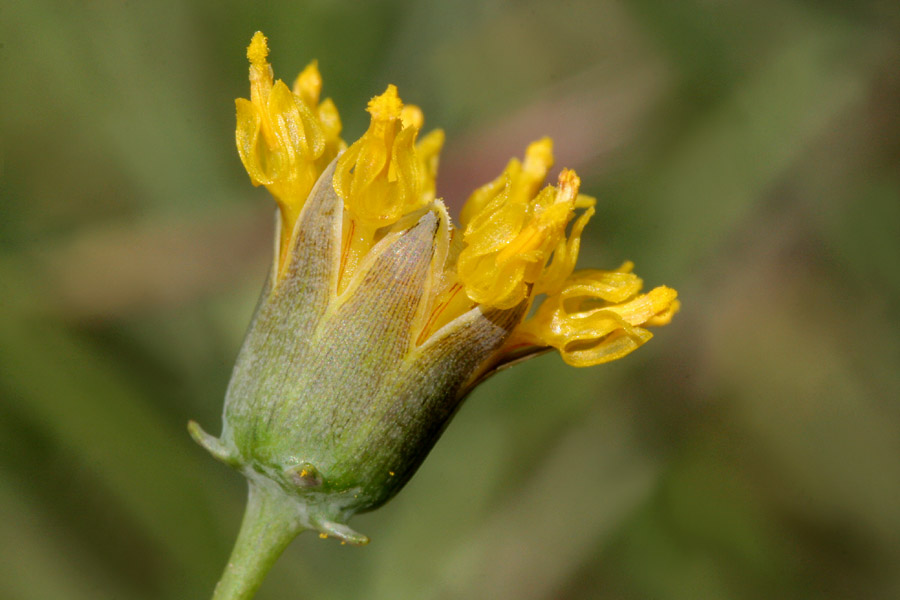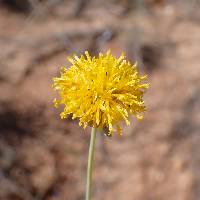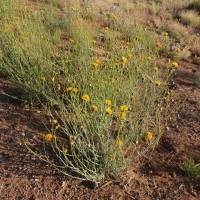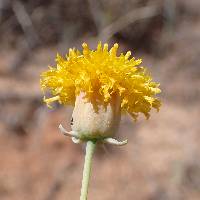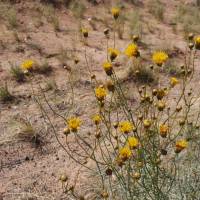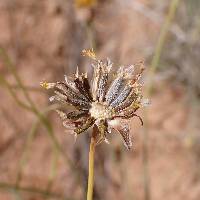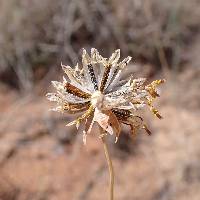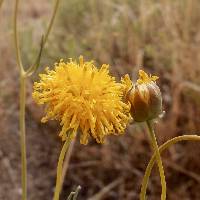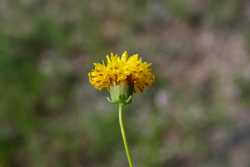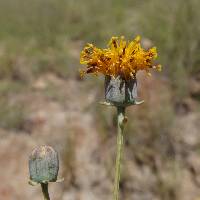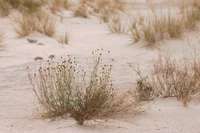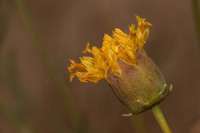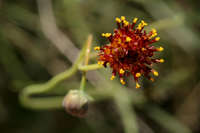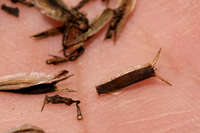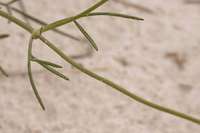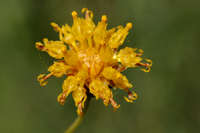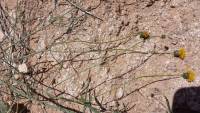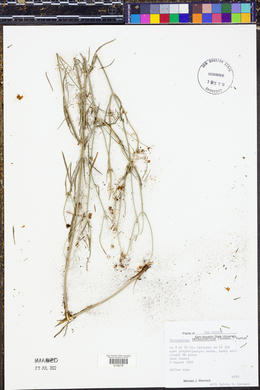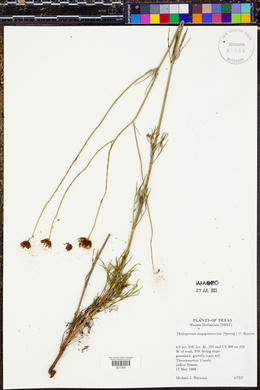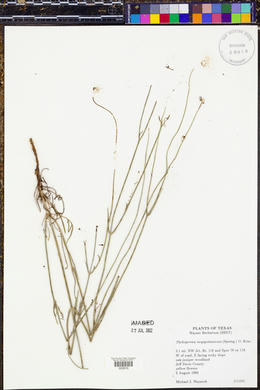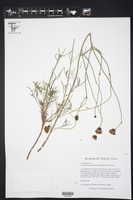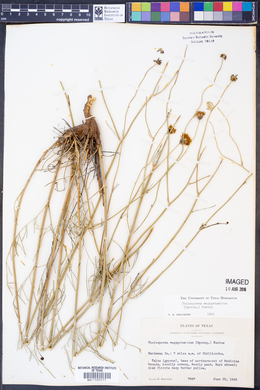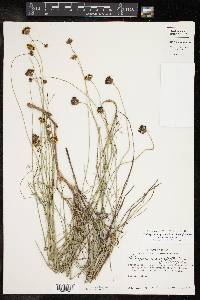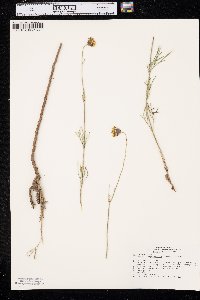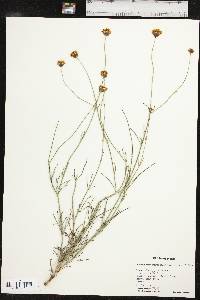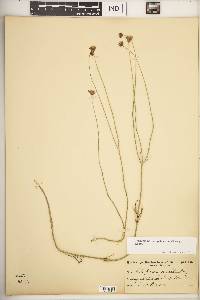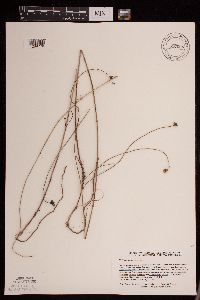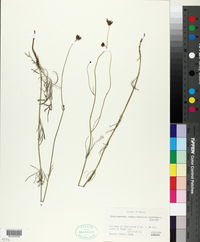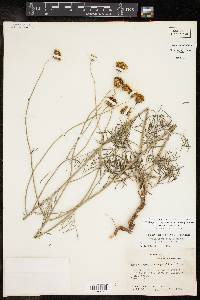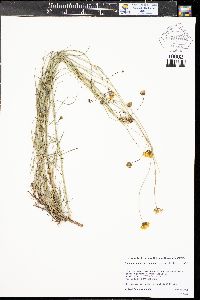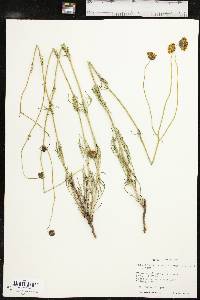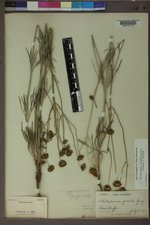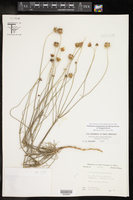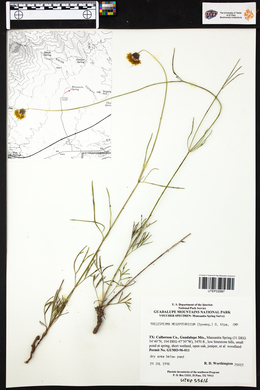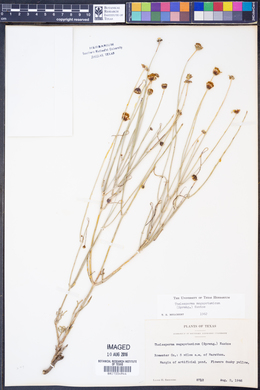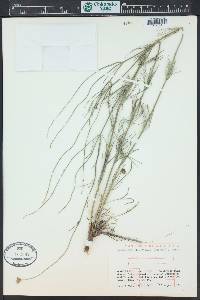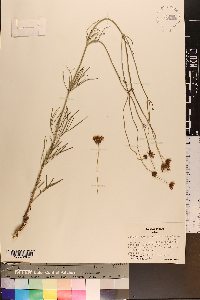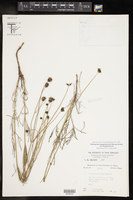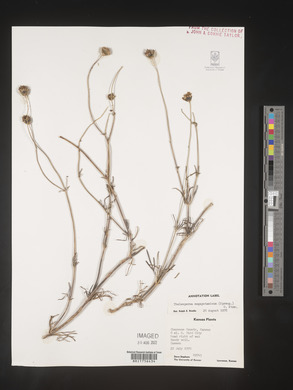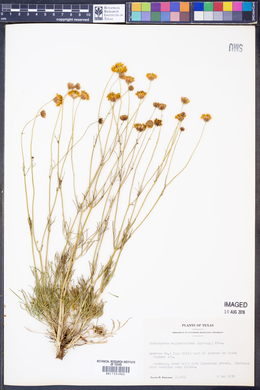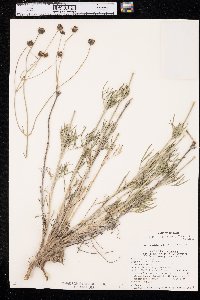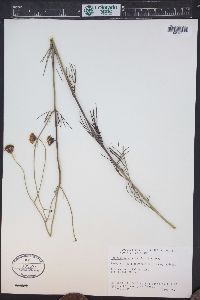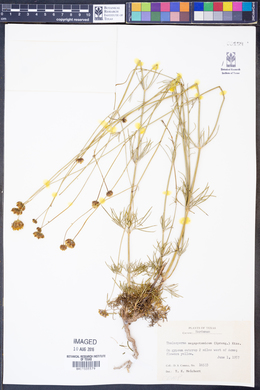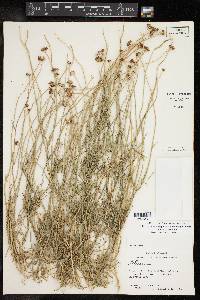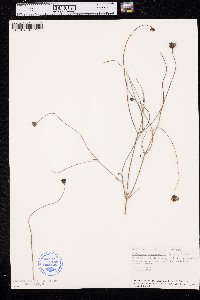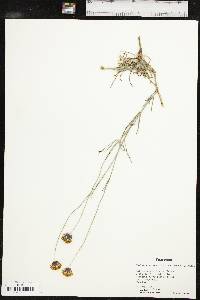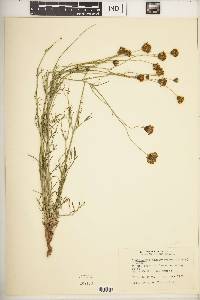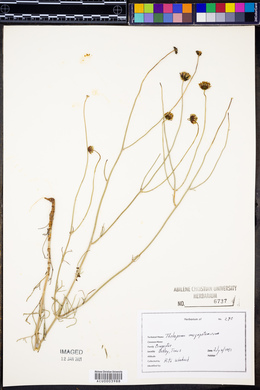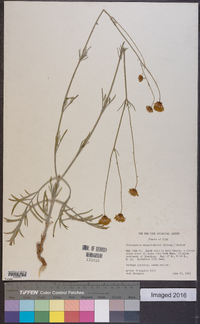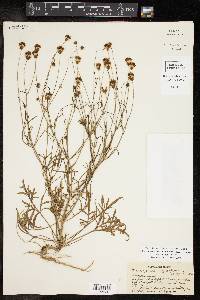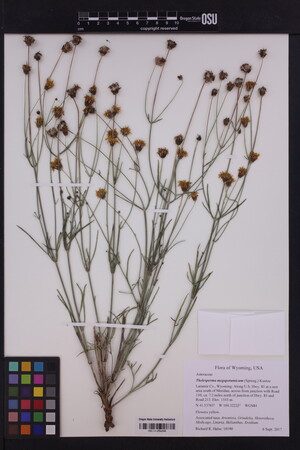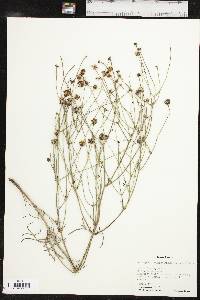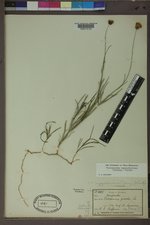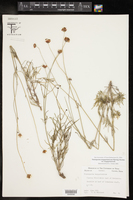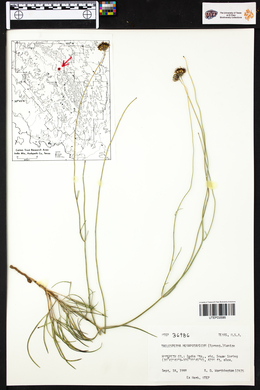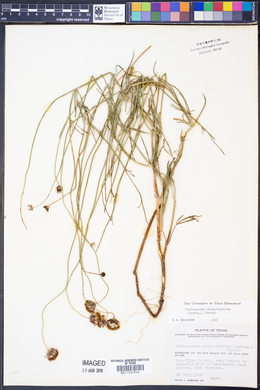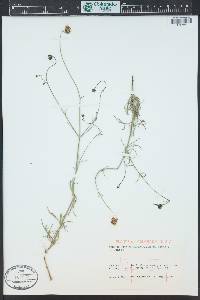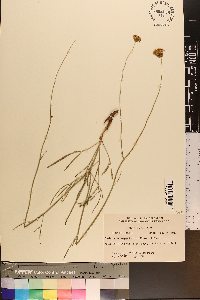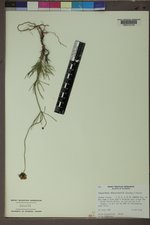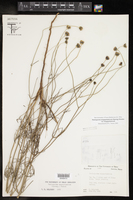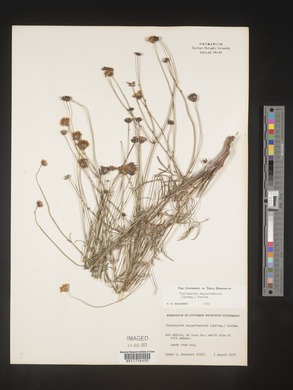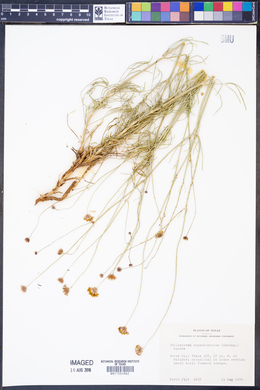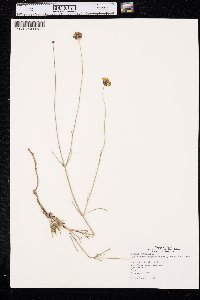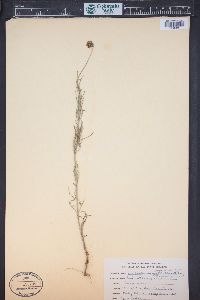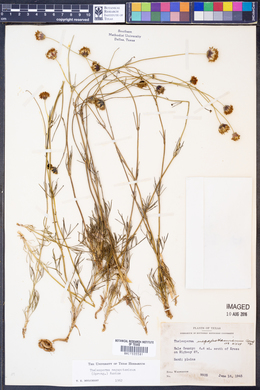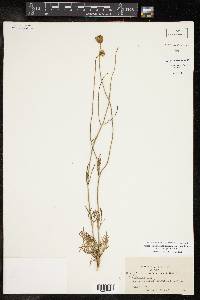Thelesperma megapotamicum
|
|
|
|
Family: Asteraceae
Hopi tea greenthread, more...Hopi-Tea, green thread, green threads, hopitea greenthread
[Bidens megapotamica Spreng., moreThelesperma gracile (Torr.) A. Gray] |
Perennials or subshrubs, (20-)30-80+ cm. Cauline leaves ± scattered over proximal 1/2-3/4 of plant heights, internodes mostly 40-100 mm; lobes mostly linear to filiform, sometimes oblanceolate, 20-40(-50+) × 0.5-1(-2.5) mm. Calyculi of 3-5+ ovate to oblong bractlets 1-2(-3) mm. Ray florets 0. Disc corollas yellow, often with red-brown nerves, throats shorter than lobes. Cypselae 5-8 mm; pappi 1-2(-3) mm. 2n = 22, 44. Flowering (Apr-)May-Oct. Disturbed places on sands or clays, oak/juniper woodlands, desert scrub, yellow-pine forests; 300-2900 m; Ariz., Ark., Colo., Kans., Nebr., N.Mex., Okla., S.Dak.. Tex., Utah, Wyo.; Mexico (Chihuahua, Coahuila); South America. Thelesperma megapotamicum sometimes persists after plantings outside its natural range in the flora area and may become established (e.g., in California).
FNA 2006, Martin and Hutchins 1980, Heil et al. 2013 Duration: Perennial Nativity: Native Lifeform: Forb/Herb General: Perennial herbs or subshrubs, 30-80 cm tall, from a woody caudex or creeping rhizomes; stems several per plant, branching from the base, glabrous and glaucous. Leaves: Opposite along the lower half to three-quarters of the stems, with stem internodes 4-10 cm long; blades once or twice pinnately divided into linear to filiform, occasionally lanceolate lobes, these 2-4 cm long and up to 1 mm wide. Flowers: Flower heads yellow, usually discoid, on the ends of long peduncles; involucres 6-9 mm high, the phyllaries in 2 distinct series; inner phyllaries fused together below the middle, the lobes with scarious (thin papery) margins; outer phyllaries 3-5, much smaller, 1-2 mm long; florets usually all discs, often with reddish brown nerves, the corolla throats shorter than lobes; ray florets usually absent, but occasionally there will be small inconspicuous rays. Fruits: Achenes 5-8 mm long, topped with a pappus of 2 stout barbed awns, about 2 mm long. Ecology: Found in disturbed sides, often in sandy or clay-rich soils, from 1,000-9,500 ft (305-2896 m); flowers May-October. Distribution: Most of the western US, from OR and CA, east to the Midwest, south to TX; south to s MEX and in S. America. Notes: Distinguished by being a perennial herb with wiry, slender diffusely branching stems; opposite, thread-like, lobed leaves along the lower 3/4 of the stems; and yellow ray-less flowers about 1 cm long or a little larger; the plants are often coated with white powdery substance and the flower heads have phyllaries with a fused inner row and outer row which is tiny and reflexed. Distinguish from T. longipes based on the arrangement of the leaves, the corollas of the disc florets and the seeds. T. longipes has leaves clustered near the base of the plant, while T. megapotamicum has leaves all along the stems, at least below the peduncles, though there may not be many leaves overall. T. longipes has disc corollas that are divided into lobes for less than half their length and seeds that may or may not have minute, 1-2 mm toothlike awns on top; T. megapotamicum has disc corollas which are divided into lobes for more than half their lengths and seeds with retrorsely barbed awns 2-3 mm long. Ethnobotany: Commonly used by multiple southwestern tribes to make a tasty tea. Also used as an aid for tuberculosis patients; as a nervous stimulant; for toothaches; and to make dyes. The flowers are used to dye yucca fibers red-brown for basket-making, and the roots are used to dye wool yellow-orange. Etymology: Thelesperma is from the Greek thele, nipple, and sperma seed, alluding to the papillae on the achenes of the first described species; megapotamicum is from Greek megas for big, and potamos for river, while the suffix denotes a state of belonging. Synonyms: Bidens megapotamica, Thelesperma gracile, Thelesperma megapotamicum var. megapotamicum Editor: SBuckley 2010, FSCoburn 2015, AHazelton 2017 Of the Great Plains, has been reported as adventive in Ill. and Mo. It is a glabrous perennial with the lvs once or twice pinnatifid into slender segments; the discoid (or inconspicuously radiate) heads terminate long, naked peduncles; the outer invol bracts are very short, and the inner ones are connate to the middle or above; the wingless achenes have a pappus of 2 retrorsely barbed awn-scales. (T. gracile) Gleason, Henry A. & Cronquist, Arthur J. 1991. Manual of vascular plants of northeastern United States and adjacent Canada. lxxv + 910 pp. ©The New York Botanical Garden. All rights reserved. Used by permission. |
|
|
|

